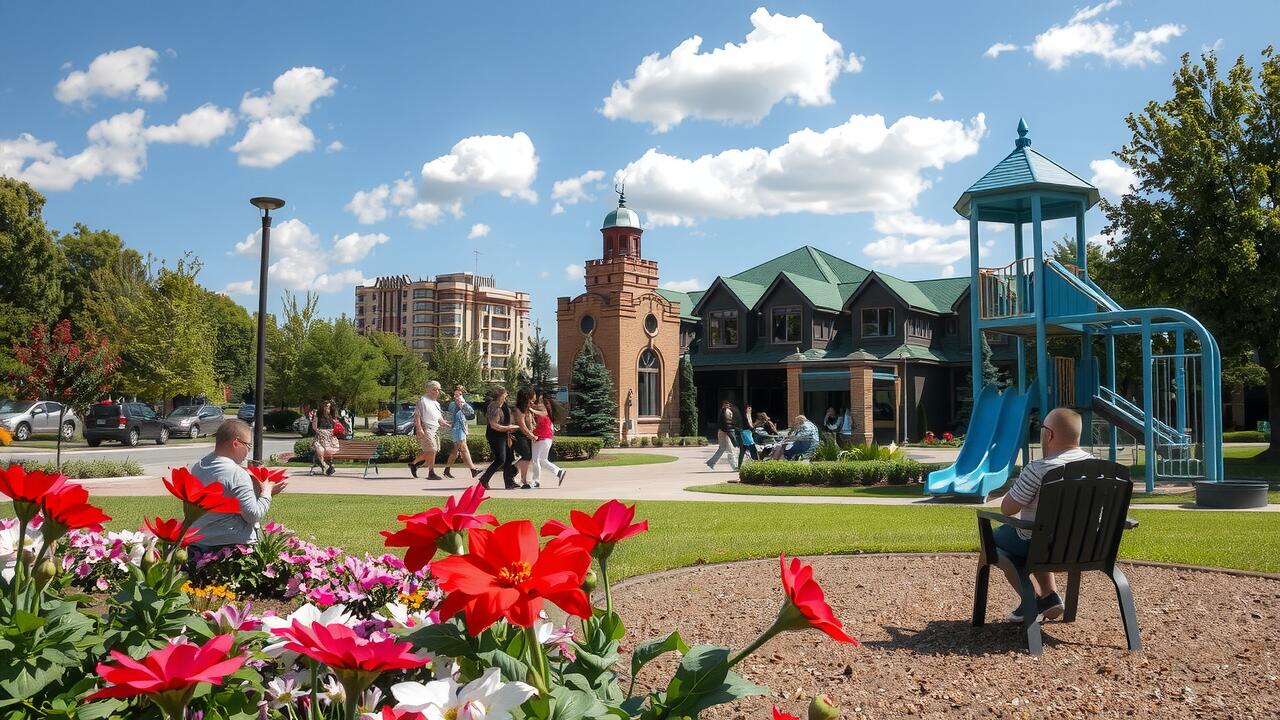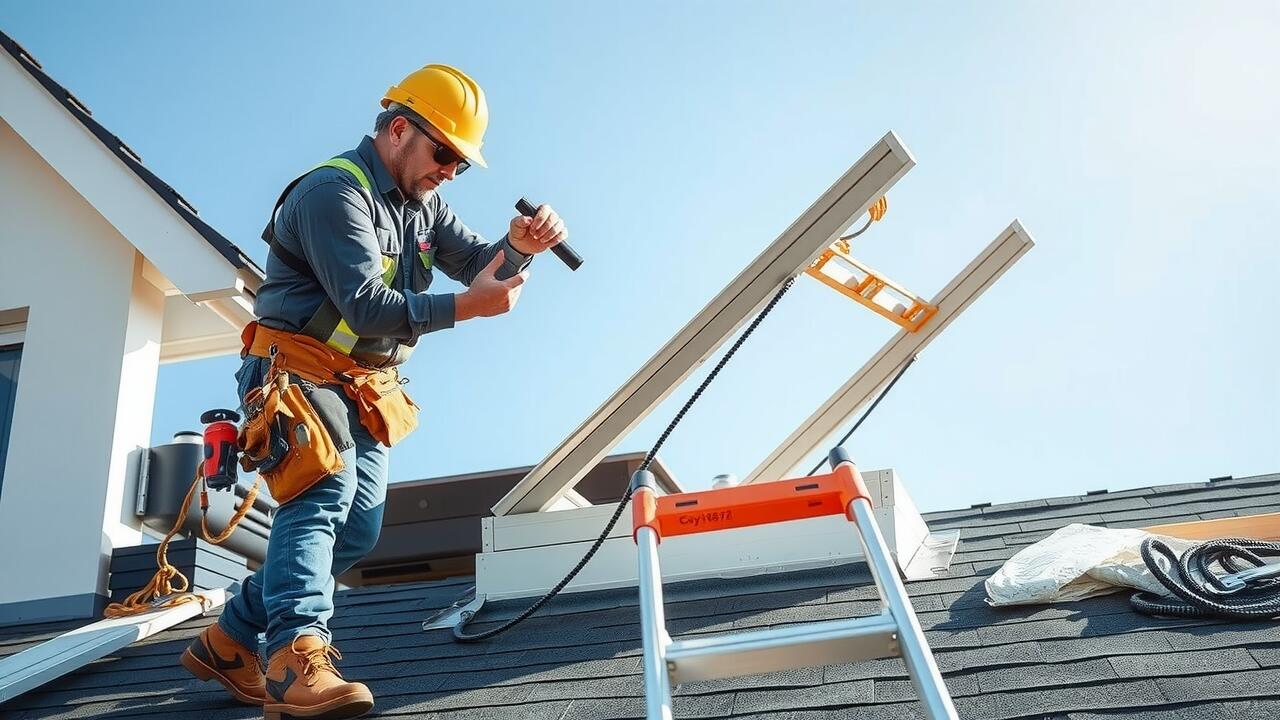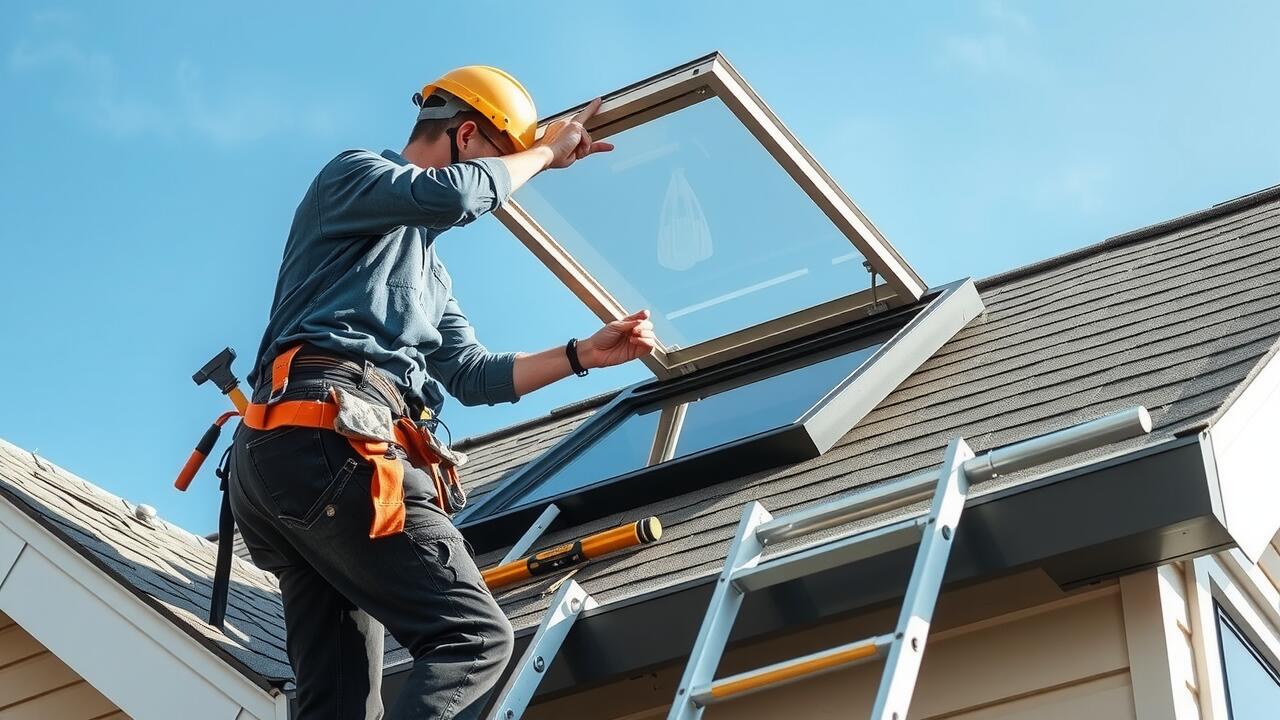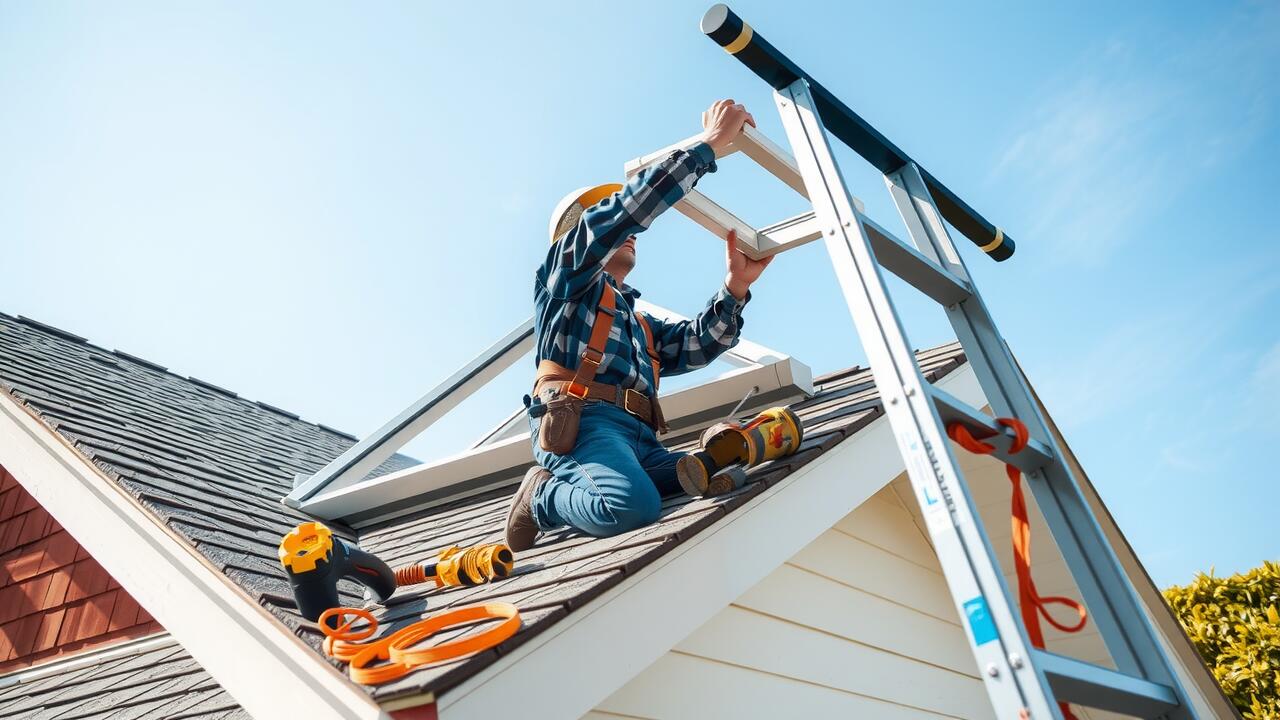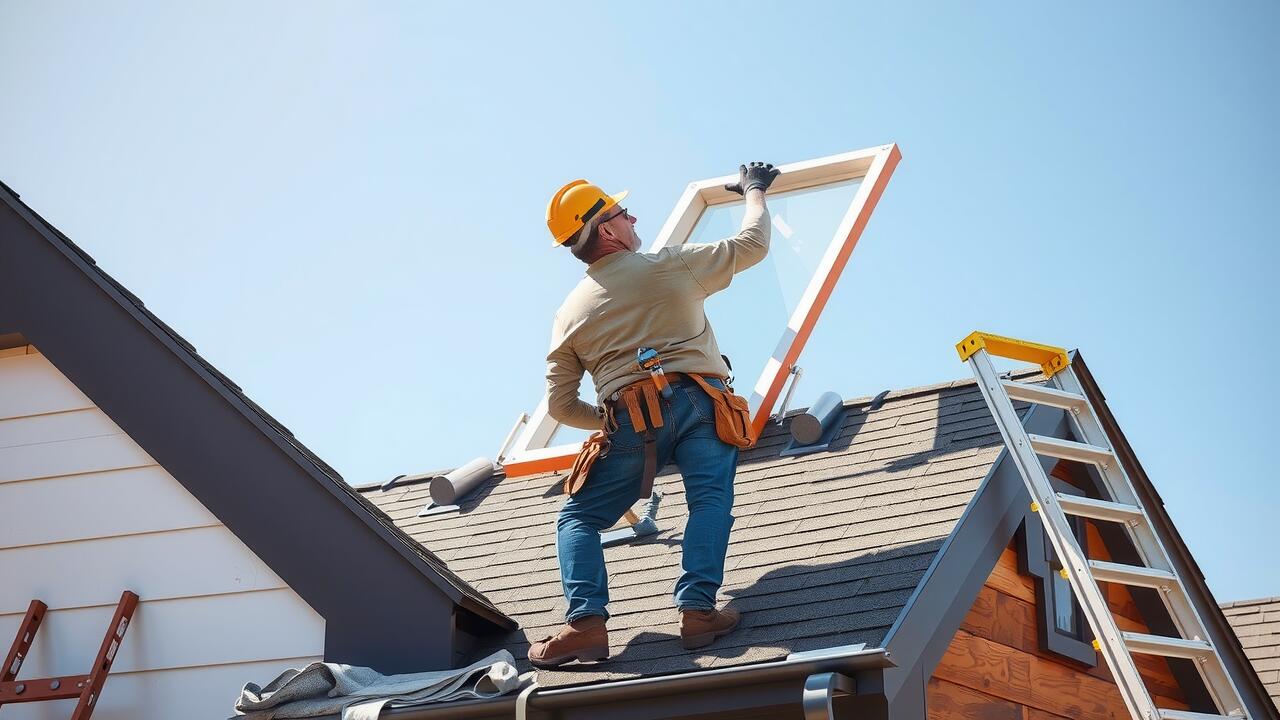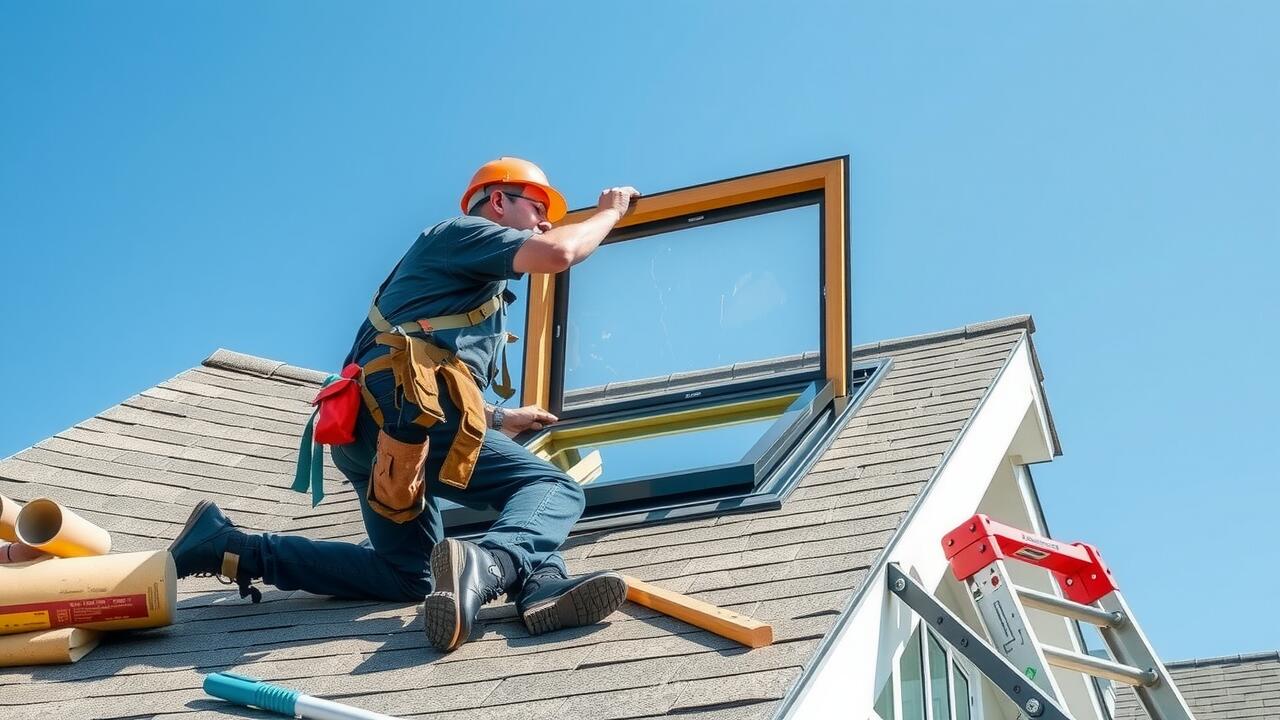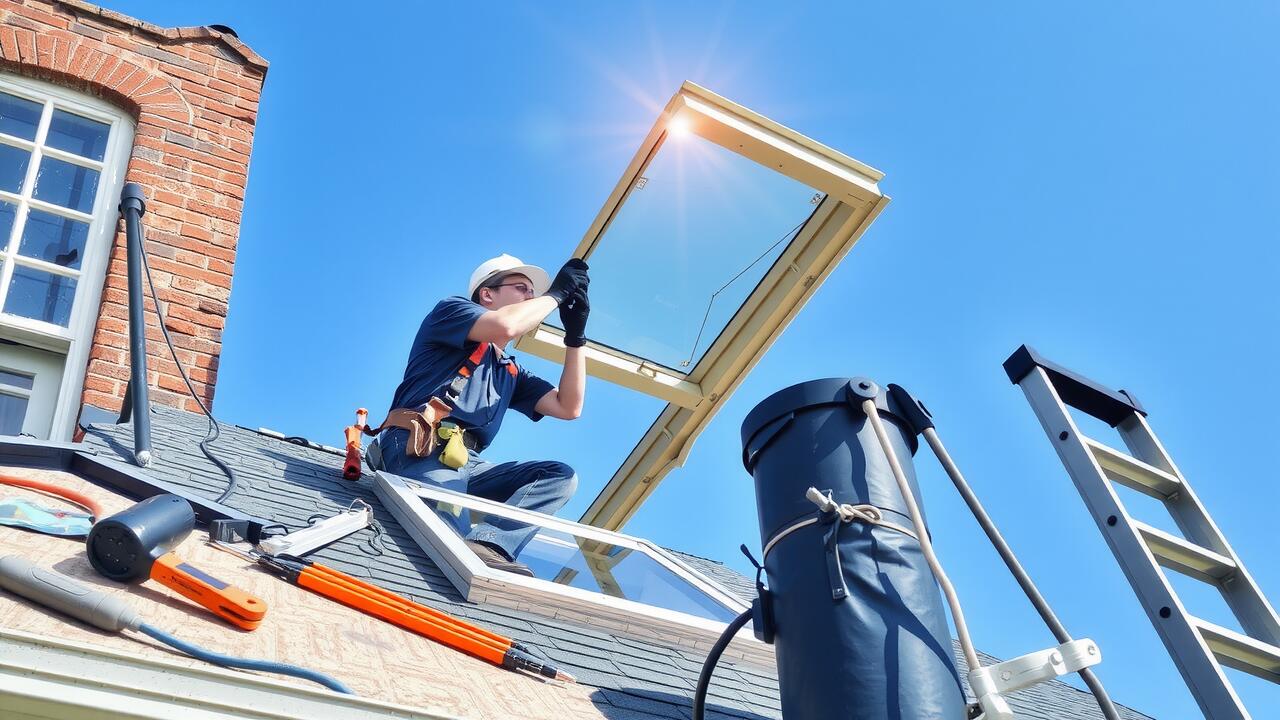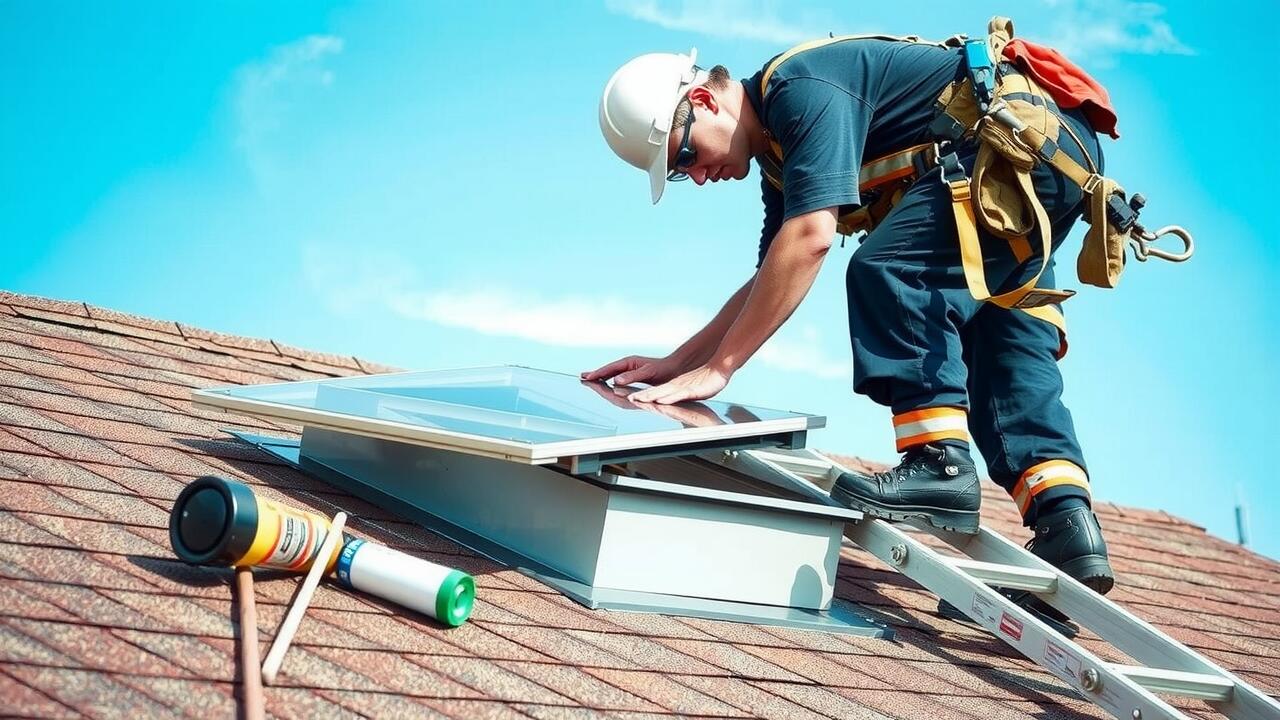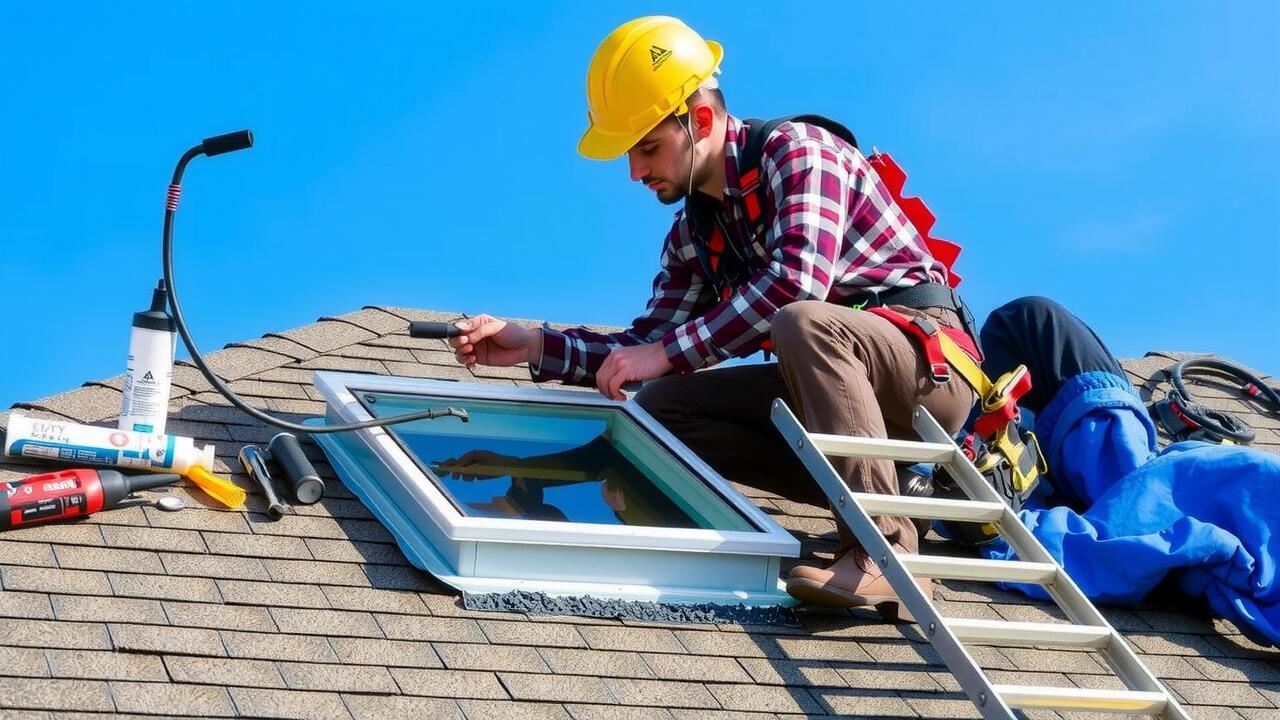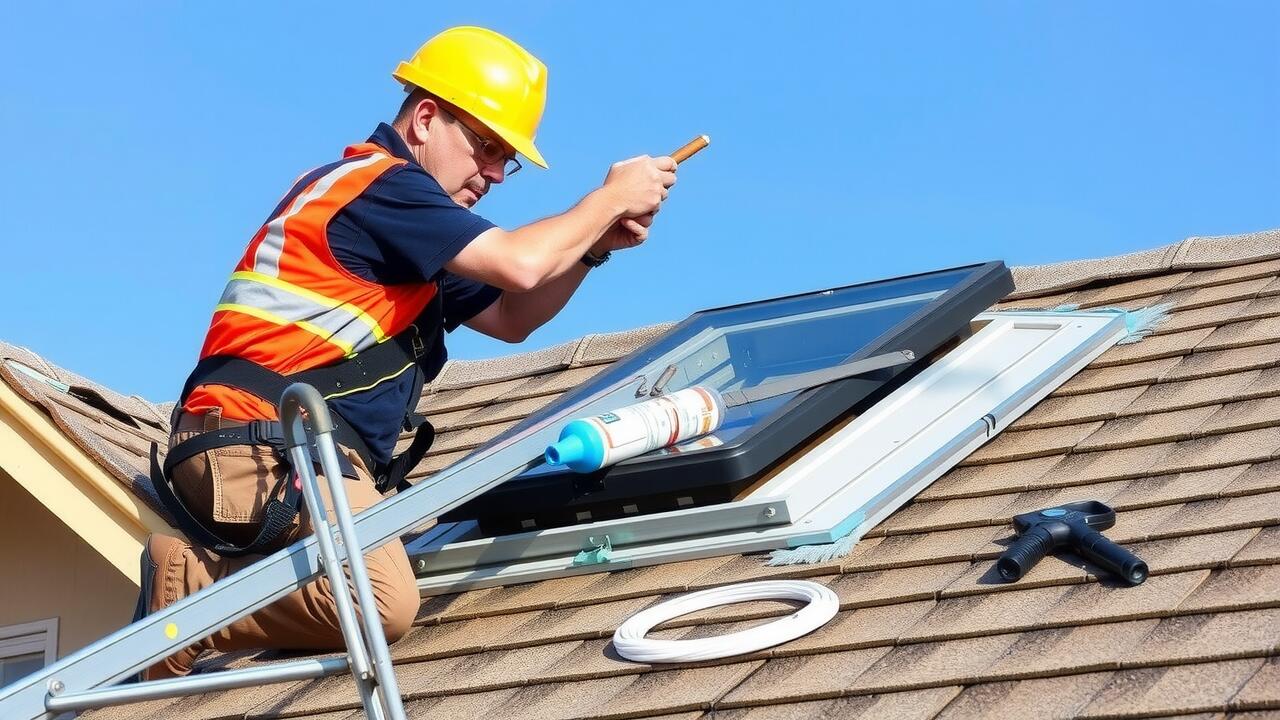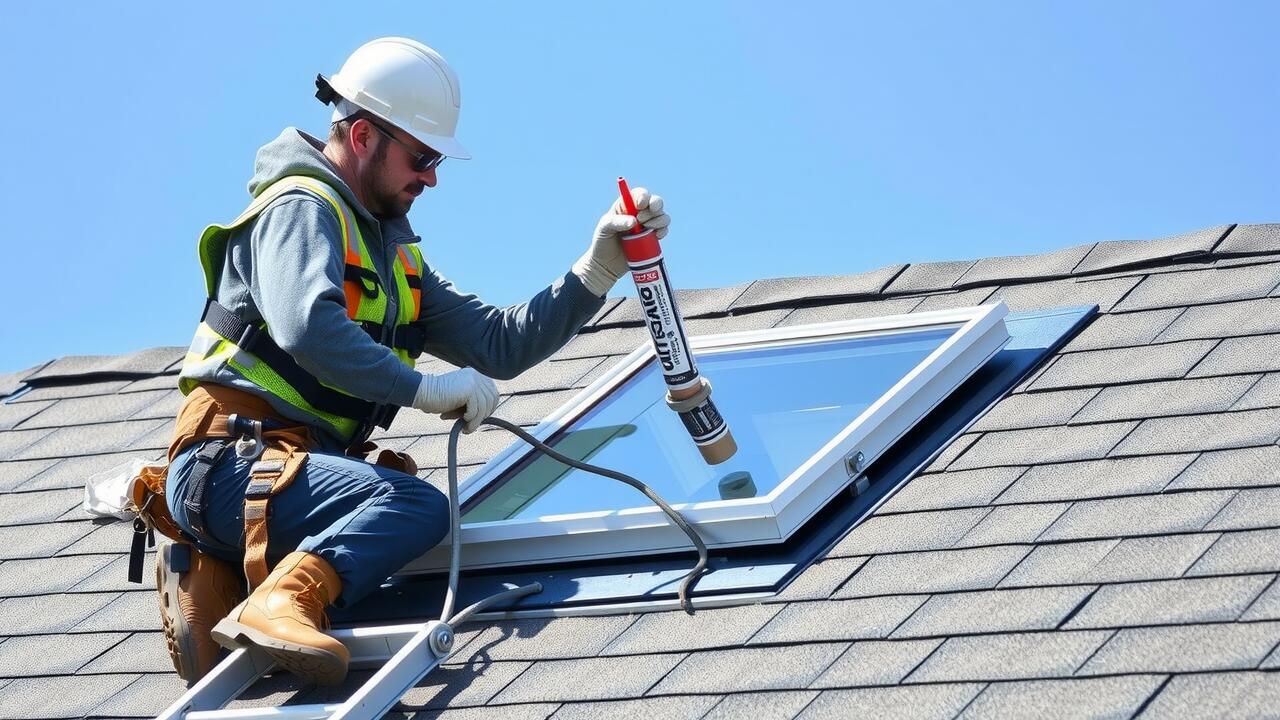Category: Uncategorized
Credit Valley Hospital
Located in the heart of Erin Mills, Credit Valley Hospital is a leading healthcare facility known for its comprehensive services and modern amenities. This hospital provides a range of care, including emergency services, surgery, and specialized medical treatments. Designed with patient comfort in mind, the facility features state-of-the-art technology and a team of dedicated professionals committed to delivering high-quality care.
The hospital plays a crucial role in the community, offering various health programs and outreach initiatives to promote wellness. With a focus on patient-centred care, the staff ensures that individuals receive personalised attention during their visit. Whether for routine check-ups or urgent medical needs, Credit Valley Hospital remains a vital resource for residents of Erin Mills and surrounding areas.
Credit Valley Hospital
Cawthra Park
Nestled within the suburban landscape of Erin Mills, Cawthra Park serves as a tranquil haven for nature enthusiasts and families alike. The park features an extensive network of walking and cycling trails that weave through lush greenery, offering a serene escape from the urban hustle. Children can delight in the playground facilities while picnic areas provide a perfect setting for families to share meals under the open sky.
Wildlife observation is a popular activity, as the park is home to various bird species and small mammals. The scenic beauty is enhanced by the presence of well-maintained gardens that bloom with seasonal flowers. Whether one is looking for a peaceful retreat or a place to engage in outdoor activities, Cawthra Park offers a delightful blend of nature and recreation, making it an essential part of the Erin Mills experience.
Cawthra Park
Glen Erin Park
Nestled in the heart of Erin Mills, the park offers a natural retreat with a mix of open green spaces, wooded areas, and scenic trails. Visitors can enjoy a peaceful walk or a leisurely stroll while taking in the sights and sounds of nature. Birds chirping and leaves rustling create a serene atmosphere that invites relaxation and mindfulness. Families often gather here for picnics, making it a popular spot for community bonding.
The park features a well-maintained playground that appeals to children of all ages. Its amenities accommodate various outdoor activities, including sports and fitness pursuits. With ample picnic tables and benches, it provides the perfect setting for gatherings or quiet reflection. Glen Erin Park is not just a space for recreation; it also enhances the quality of life for local residents by fostering a connection with nature amidst urban surroundings.
Glen Erin Park
The Riverwood Conservancy
Nestled along the banks of the Credit River, this expansive natural area provides a serene escape from urban life. With over 150 acres of parkland, the Conservancy features a diverse range of habitats including wetlands, forests, and meadows. Visitors can explore numerous trails that wind through picturesque landscapes, making it a favourite spot for hikers, birdwatchers, and nature enthusiasts alike. Educational programs and guided walks often highlight the unique flora and fauna that call the area home.
The Riverwood Conservancy also offers various events throughout the year, allowing the community to engage with nature. Workshops on gardening, sustainability, and wildlife conservation focus on fostering a deeper understanding of the environment. Families can enjoy picnicking in designated areas while children partake in fun, hands-on activities designed to instil a love for nature. This vibrant hub of ecological awareness strengthens the connection between residents and the natural world.
The Riverwood Conservancy
FAQS
What are some popular attractions in Erin Mills, Mississauga?
Some popular attractions in Erin Mills include Credit Valley Hospital, Cawthra Park, Glen Erin Park, and The Riverwood Conservancy.
Is Cawthra Park suitable for families?
Yes, Cawthra Park is family-friendly and offers various recreational facilities, including playgrounds, walking trails, and picnic areas.
Can I visit The Riverwood Conservancy year-round?
Yes, The Riverwood Conservancy is open year-round, offering different experiences in each season, such as guided nature walks and educational programs.
Are there any outdoor activities available in Glen Erin Park?
Yes, Glen Erin Park features walking trails, sports fields, and playgrounds, making it an excellent spot for outdoor activities such as hiking, cycling, and picnicking.
Is Credit Valley Hospital accessible by public transportation?
Yes, Credit Valley Hospital is accessible by public transportation, with several bus routes serving the area. Check local transit schedules for specific details.
Potential Drawbacks
Skylight installation can enhance natural light in a home but may also present potential drawbacks. One significant concern involves energy efficiency. Poorly installed skylights might result in heat loss during winter or excessive heat gain in summer, leading to increased energy bills and discomfort. Homeowners must also consider potential leaks that can stem from improper installation or degradation over time, which can cause water damage and mold growth.
Another drawback is the impact on a home’s aesthetic and architectural integrity. While skylights can modernise a space, they may clash with traditional designs, affecting curb appeal. Furthermore, the placement of skylights can lead to overexposure to sunlight, making rooms uncomfortably bright and necessitating additional window treatments. Balancing benefits and drawbacks is crucial before proceeding with skylight installation.
Installation Costs and Maintenance Issues
Skylight installation can vary significantly in cost depending on factors such as size, type, and location of the skylight. Basic models may start at a few hundred dollars, while more elaborate designs or large installations can run into the thousands. Additionally, the complexity of the roof structure and accessibility can affect overall expenses. Homeowners should also consider the cost of professional installation, as attempting a DIY project may lead to unforeseen issues and further expenses down the line.
In terms of maintenance, skylights require regular attention to ensure they remain in good condition. Common issues include sealant wear, condensation, and dust accumulation on the glass surface. Regular cleaning and inspections can help prevent leaks and enhance energy efficiency. Homeowners might also need to address potential roof repairs adjacent to the skylight, as these can arise over time. Adequate planning and budgeting for both initial installation and ongoing maintenance are essential for a successful skylight addition.
Steps to Apply for Planning Permission
Applying for planning permission for a skylight installation involves several steps that must be carefully followed. Begin by checking local regulations and guidelines, as these can vary significantly between municipalities. Most regions will require you to submit an application detailing your intended project. This application generally includes site plans, elevations, and a description of the skylight’s design and specifications.
Once your application is prepared, you will need to gather the necessary documentation that supports your proposal. This may encompass property deeds, existing building plans, and any environmental assessments if applicable. After submitting your application, it is essential to monitor its status. In some cases, additional information or modifications may be requested by local authorities before permission is granted.
Required Documentation and Forms
When applying for planning permission for skylight installation, specific documentation is typically required by local authorities. Applicants must submit detailed drawings of the proposed skylight, showing its dimensions and location on the roof. Additionally, photographs of the existing structure may be necessary to provide context for the planned changes. Alongside these visual elements, a completed application form outlining the purpose and design of the skylight will need to be included.
Other documents might include a site plan and, if applicable, a heritage impact statement if the property is located in a designated conservation area. Each municipality may have its own specific requirements, so it’s essential to check with local planning offices to ensure all necessary forms are accurately filled out and submitted. This thorough preparation can help streamline the approval process for skylight installation.
Common Misconceptions
There are several common misconceptions about skylight installation that can lead to confusion among homeowners. One prevalent myth is that a skylight automatically enhances property value. While increasing natural light can make a space feel more inviting, it does not always correlate with a significant increase in market value. Proper installation and integration into the home’s design play critical roles in determining whether a skylight adds genuine appeal.
Another belief revolves around the assumption that planning permission is unnecessary for skylight installation. Many homeowners think these additions fall under minor alterations that do not require official approval. In reality, building regulations and local planning guidelines can vary significantly. It is essential to consult with local authorities before proceeding to ensure compliance with any necessary permits.
Myths About Skylight Installations
Many homeowners believe that skylight installation is a straightforward process requiring no special considerations or permissions. This misconception often leads to surprises, such as encountering local building regulations or homeowners association guidelines that may restrict skylight additions. In reality, understanding these requirements is crucial before commencing any work to avoid unnecessary complications.
Another common myth is that skylight installation will inevitably lead to energy inefficiency. While skylights can lead to increased heat gain or loss if not properly chosen or installed, modern designs incorporate advanced materials and technologies that enhance energy performance. Properly installed skylights can actually contribute to energy savings through natural lighting and ventilation while adding aesthetic value to a space.
FAQS
Do I need planning permission to install a skylight?
In many cases, you may not need planning permission for installing a skylight, especially if it falls within permitted development rights. However, this can vary based on local regulations, so it’s essential to check with your local planning authority.
What factors could require me to obtain planning permission for a skylight?
Factors such as the skylight’s location, size, design, and whether your home is located in a conservation area or is a listed building can influence the need for planning permission.
How do I apply for planning permission for a skylight?
To apply for planning permission, you typically need to submit an application to your local planning authority that includes details about the proposed installation, site plans, and any necessary documentation.
What documentation is required when applying for planning permission for a skylight?
Required documentation may include application forms, site plans, elevations of your home, photographs of the existing conditions, and any supporting statements outlining the design and impact of the skylight.
Are there any common misconceptions about planning permission for skylights?
Yes, some common misconceptions include the belief that all skylight installations require planning permission or that permission is always granted. It’s essential to research and understand specific local regulations and guidelines to avoid issues.
Maintenance Requirements
Skylight installation requires regular maintenance to ensure they function properly and enhance the overall atmosphere of the home. Homeowners should routinely inspect the seals and flashing around the skylights to prevent leaks. Cleaning the glass is essential for maintaining natural light, as dirt and debris can significantly diminish brightness. Depending on the type of skylight, the cleaning process may vary, requiring specific tools or solutions to avoid damage.
In addition to visual upkeep, it is crucial to monitor the area around the skylights for any signs of moisture or condensation. Proper ventilation can play a key role in extending the lifespan of skylights and preventing issues like mould growth. Regular checks of the frame and glazing will help detect any potential problems early on. Staying proactive with these maintenance tasks ensures that the benefits of skylight installation continue to enhance living spaces for years to come.
Keeping Skylights in Optimal Condition
Regular maintenance is essential for skylights to ensure they continue to function efficiently and enhance the beauty of a home. Homeowners should clean the glass surfaces periodically to remove dirt and debris, which can impede natural light entry. Inspecting the seals around the skylights is also important to prevent leaks. Over time, these seals can wear out and require replacement to maintain the integrity of the installation.
During skylight installation, proper waterproofing techniques should be applied to minimise the risk of leaks. Regular checks on flashing, the material that directs water away from the skylight, are crucial as well. If any signs of wear or damage are noticed, addressing these issues promptly can help avoid costly repairs in the future. Maintaining good ventilation around the skylight can also prevent issues related to condensation and moisture build-up.
Choosing the Right Location for Skylights
The placement of skylights plays a crucial role in their effectiveness and overall appeal. Selecting the right location requires careful consideration of the room’s layout and purpose. Areas that benefit from natural light, such as living rooms, kitchens, and bathrooms, are ideal candidates for skylight installation. Additionally, the orientation of the home can affect how much sunlight enters through the skylights. South-facing skylights generally allow more direct sunlight, which can warm up spaces during colder months but may also require shading or ventilation options to prevent overheating in the summer.
When deciding where to install skylights, it is essential to take into account the roof’s structure and any potential obstructions, such as trees or nearby buildings. Slope and angle are also important factors, as they influence how rainwater will drain away from the skylight, thereby reducing the risk of leaks. Proper ventilation and access for maintenance should also be part of the planning process for skylight installation, ensuring that these features remain practical and functional over time.
Factors to Consider When Installing
When considering skylight installation, the location of the skylight is crucial. Ideal placement can significantly enhance the natural light entering a room, highlighting architectural features and improving energy efficiency. Assessing roof angles and nearby structures will help determine the best position. It is also vital to take into account how the skylight will interact with the surrounding environment, including how sunlight changes throughout the day.
Another important factor is the type of skylight being installed. Options range from fixed designs that only allow light to adjustable models that can vent fresh air. Each style offers different benefits, impacting both functionality and aesthetics. Homeowners should also evaluate potential energy efficiency and any required permits or building regulations, ensuring compliance with local guidelines throughout the skylight installation process.
Skylights vs. Traditional Windows
Skylights and traditional windows serve the primary purpose of bringing natural light into a home, yet they achieve this in distinct ways. Traditional windows typically provide views of the outdoors while allowing sunlight to enter at eye level. This orientation can enhance the aesthetic appeal of a room. On the other hand, skylights are mounted in the ceiling, flooding space with light from above. The unique positioning of skylights can create a feeling of openness and spaciousness that is often unachievable with standard windows.
When considering skylights for your home, skylight installation entails specific advantages and potential drawbacks. Skylights can improve ventilation when designed with operable features, control humidity in certain conditions, and enhance energy efficiency through passive solar gain. However, they may also present challenges, such as potential leaks or excessive heat during the summer months. Traditional windows might offer simpler maintenance and applications in areas where privacy is more of a concern. Each option has its own set of pros and cons, making the decision highly subjective based on the homeowner’s preferences and needs.
Pros and Cons of Each Option
Skylights offer unique benefits that can enhance the overall appeal of a home. They provide natural light, making spaces feel more open and airy. This feature can reduce the need for artificial lighting, which may result in energy savings. Additionally, skylights can improve ventilation in certain areas, contributing to a more comfortable living environment. However, the installation process can be more complex than that of traditional windows. This complexity may lead to higher initial costs and potential challenges regarding insulation and sealing if not done correctly.
On the other hand, traditional windows have their own set of advantages. They are generally easier and less expensive to install compared to skylight installation. Windows are also available in a wider variety of styles, sizes, and configurations, allowing homeowners to choose options that best suit their home’s aesthetic. However, they may not offer the same amount of natural light or unique visual appeal as skylights. While skylights can create a stunning focal point, they may also lead to increased heat gain during summer months, which can affect energy costs. Each option has distinct pros and cons that homeowners must consider when planning their renovations.
FAQS
Do skylights increase the overall value of a home?
Yes, skylights can enhance a home’s value by improving natural light, providing aesthetic appeal, and promoting energy efficiency when installed properly.
What maintenance is required for skylights?
Skylights require regular cleaning to prevent dirt buildup and ensure optimal light transmission. It’s also important to check for leaks and inspect the seals periodically to maintain their condition.
Are there specific locations that are better for installing skylights?
Yes, the best locations for skylights often include areas that receive ample sunlight, such as kitchens or living rooms. However, considerations should include roof pitch, potential obstructions, and local climate conditions.
How do skylights compare to traditional windows in terms of benefits?
Skylights offer unique benefits such as increased natural light and ventilation. However, traditional windows can provide better views and may be easier to clean, making each option suitable for different needs.
What are the potential downsides of installing skylights?
Some potential downsides of skylights include the risk of leaks, increased heat gain in warm weather, and higher installation costs compared to traditional windows. Proper planning and installation can mitigate many of these issues.
Skylight Materials and Durability
Skylights are constructed from various materials, each offering different levels of durability and performance. Common choices include acrylic, polycarbonate, and glass. While acrylic and polycarbonate are lightweight and resist shattering, they can suffer from scratching and UV degradation over time. Conversely, glass provides superior clarity and insulation but typically weighs more, necessitating careful consideration during skylight installation to ensure the structure can support the added load.
The choice of material significantly impacts the long-term durability of skylights. High-quality glass options are often treated to resist UV rays and prevent condensation, enhancing their lifespan and maintaining clarity. When planning for skylight installation, it’s crucial to assess the material’s ability to endure environmental stresses such as temperature fluctuations and potential weather-related impacts. Investing in durable materials will ultimately lead to a more effective and long-lasting skylight system.
The Importance of Quality Glass
The choice of glass used in skylight installation significantly impacts both performance and durability. High-quality glass provides better insulation, reducing heat loss in winter and preventing excessive heat gain in summer. This can lead to more stable indoor temperatures and lower energy costs. Additionally, premium glass can resist impacts and scratches, ensuring clarity and longevity.
Moreover, the type of glass also influences UV protection. Quality glass often comes with coatings that block harmful ultraviolet rays, helping to preserve the integrity of furnishings and flooring beneath the skylight. When selecting materials for skylight installation, considering factors such as thermal efficiency and UV protection is essential for achieving not only aesthetic appeal but also maintaining functionality over time.
Potential Structural Problems
Skylight installation can introduce specific structural challenges that homeowners may overlook. The added weight of a skylight requires proper reinforcement of the roof structure to ensure it can bear the load. Failing to assess and strengthen the surrounding framework can result in sagging or even increase the risk of roof failure over time. This concern becomes particularly critical in regions with heavy snowfall or adverse weather conditions where the load on the roof can fluctuate significantly.
Moreover, improper installation can lead to further structural issues, such as leaks and compromised insulation. If a skylight is not sealed correctly, water penetration can cause damage to roofing materials and framing. This not only affects the structural integrity of the home but also leads to expensive repairs and potential mould growth. Homeowners must pay close attention to both the installation process and the ongoing maintenance to prevent these potential structural problems from arising.
Weight and Load-Bearing Issues
Weight distribution is a crucial factor to consider during skylight installation. The added weight of a skylight, particularly if it is a larger model or made from heavier materials like glass, can place significant stress on the supporting structure. If the roof is not designed or reinforced to handle this additional load, it can lead to sagging or even structural failure over time. Homeowners must ensure that the framework beneath the skylight is adequately supported to prevent long-term issues.
Proper planning and assessment are vital for addressing potential load-bearing concerns. Before proceeding with skylight installation, consulting a structural engineer or an experienced contractor can provide insights into the necessary reinforcements. Adjustments might include adding extra beams or modifying existing structures to distribute the weight evenly. Failing to take these steps can result in costly repairs, making it essential for homeowners to prioritise structural integrity during the installation process.
Aesthetic Choices and Challenges
Skylight installation can significantly enhance the aesthetic appeal of a home. The influx of natural light can create a warm and inviting atmosphere. Additionally, skylights can help highlight architectural features and improve the overall ambience of a room. However, selecting the right style, shape, and size requires careful consideration to ensure that it complements the existing design of the house.
Not all skylights are suitable for every home, and mismatches can lead to visual dissonance. Homeowners must take into account the proportions and layout of the space when deciding on skylight placement. A poorly positioned skylight might disrupt the flow of the room. Balancing light, aesthetic value, and functionality is essential for achieving desired results in skylight installation.
Integrating Skylights into Home Design
Incorporating skylights into a home’s design requires careful consideration of both aesthetics and functionality. Selecting the right location is crucial; placing skylights in areas that receive ample natural light enhances a space while also improving energy efficiency. Proper orientation can maximise sunlight exposure, creating a warm and inviting atmosphere indoors. The choice of size and shape also plays a significant role, as larger skylights can flood a room with light but may require structural adjustments to support their weight.
Skylight installation can present challenges, particularly when integrating these features into an existing architectural design. Homeowners must consider the slope of the roof and any potential obstructions, such as chimneys or overhanging branches. It is important to maintain the balance between aesthetics and practicality, ensuring that the skylight complements the overall design while serving its intended purpose. Addressing these factors during the planning phase helps ensure a successful and harmonious addition to the home.
FAQS
What are the most common problems associated with skylights?
Common problems with skylights include leaks, poor insulation, and potential structural issues due to improper installation or inadequate support.
How can I prevent leaks in my skylight?
To prevent leaks, ensure proper installation, regularly inspect seals and flashings, and maintain the surrounding roofing materials to divert water away from the skylight.
Are certain skylight materials more durable than others?
Yes, certain materials like tempered glass and polycarbonate are generally more durable and resistant to impact and weathering compared to traditional glass.
What structural issues should I be aware of when installing a skylight?
Potential structural issues include inadequate load-bearing support, which can lead to sagging or even collapse, and ensuring the roof’s integrity is maintained during installation.
How do skylights impact the aesthetic of a home?
Skylights can enhance natural light and create a sense of openness, but they can also pose design challenges, such as integrating them seamlessly into the existing architecture and ensuring they complement the overall style.
Energy Efficiency and Long-Term Savings
Skylight installation can significantly improve a home’s energy efficiency. Natural light reduces the need for artificial lighting during the day, which can lead to lower electricity bills. By strategically placing skylights, homeowners can enhance ventilation, allowing warm air to escape while drawing in cooler air, especially during the summer months. This creates a more comfortable indoor environment without relying heavily on heating or cooling systems.
In addition to immediate energy savings, skylight installation can contribute to long-term financial benefits. Properties with natural lighting tend to be more appealing to potential buyers, which can increase resale value. Furthermore, homeowners may benefit from energy efficiency rebates or incentives provided by local governments or utility companies, making the initial investment in skylights more economical over time.
The Impact of Skylights on Energy Bills
Skylight installation can significantly influence energy bills by enhancing natural lighting within a home. During daylight hours, the introduction of skylights reduces reliance on artificial lighting. This natural illumination can lead to lower electricity consumption, especially in spaces that previously depended heavily on electric lights. Furthermore, the strategic placement of skylights can also improve ventilation, reducing the need for air conditioning during warmer months, which contributes to overall energy savings.
The energy efficiency of skylights is further enhanced by modern glazing technologies. Many skylights now feature low-emissivity coatings and double or triple glazing, which help to mitigate heat loss during the winter months. This technology not only keeps homes warmer but also reduces heating costs in colder Canadian climates. Thus, investing in skylight installation is not just about improving aesthetics; it can also provide measurable financial benefits through lower energy bills over time.
DIY vs. Professional Installation
Choosing between DIY and professional installation for skylight installation hinges on skill level and experience. Those who are handy with tools and have a basic understanding of roofing may find satisfaction in taking on the project themselves. This approach can save on labour costs but requires careful planning and consideration of safety measures. Proper installation is critical to prevent leaks and ensure energy efficiency, making thorough research essential for any DIY enthusiast.
On the other hand, hiring professionals for skylight installation often guarantees a higher quality outcome. Experts bring experience, knowledge, and efficiency to the process, which can significantly reduce the time required for completion. While this option typically incurs higher upfront costs, it may be beneficial in the long run as it minimizes the risk of costly repairs stemming from improper installation. Additionally, many professionals offer warranties, adding peace of mind to the investment.
Cost Implications of Each Approach
Choosing between DIY skylight installation and hiring a professional can significantly influence your overall expenses. A DIY approach typically requires purchasing all necessary materials and tools, which can add up. While this method may save on labour costs, the risk of miscalculations or improper installation can lead to more expenses down the line, such as repairs or even structural damage.
On the other hand, professional skylight installation comes with its own set of costs. While the initial investment might be higher due to labour charges, experienced contractors often ensure a proper fit and finish, decreasing the likelihood of future issues. This can translate to greater long-term savings on energy bills and maintenance. Weighing these financial implications carefully can help determine the most cost-effective route for your skylight project.
Hidden Costs to Consider
When planning for skylight installation, it’s essential to account for hidden costs that may arise during the project. These expenses can include necessary structural modifications to ensure the skylight is properly integrated into your home. If your roof type requires additional framing reinforcement or if there is existing damage that needs addressing, these costs can add up quickly, impacting your overall budget significantly.
Maintenance should also be a consideration when budgeting for skylight installation. Skylights can be prone to leaks if not installed correctly or if seals degrade over time. Regular inspections and potential repairs could be needed to avoid water damage or air leaks, which can result in higher utility bills. Account for these long-term expenses to maintain optimal performance and protect your investment.
Potential Repair and Maintenance Expenses
When considering skylight installation, potential repair and maintenance expenses should not be overlooked. Skylights can be prone to leaks, especially if not installed correctly. Regular inspections are essential to catch any issues early. Weather elements such as heavy rain or snow can exacerbate these problems, leading to costly repairs down the line. Homeowners should factor in these ongoing maintenance costs as part of their overall budgeting for skylight installation.
Additionally, the materials chosen for skylight installation play a crucial role in long-term upkeep. For instance, glass skylights may require cleaning more often than acrylic options, which can scratch more easily. The frames and seals used in the installation can wear out, necessitating replacements. As a result, it’s wise to consider the long-term durability of materials and schedule regular maintenance checks to ensure the skylight remains in good condition.
FAQS
What is the average cost to install a skylight in Canada?
The average cost to install a skylight in Canada typically ranges from $1,000 to $3,000, depending on the type of skylight, the complexity of the installation, and any additional features.
Are there energy savings associated with installing a skylight?
Yes, skylights can enhance energy efficiency by allowing natural light to illuminate your home, potentially reducing electricity costs. They can also improve ventilation, which may lower heating and cooling expenses over time.
Can I install a skylight myself to save money?
While DIY installation may save on labour costs, it requires a certain level of skill and experience. Mistakes during installation can lead to leaks and additional expenses, so it’s often recommended to hire a professional for best results.
What hidden costs should I be aware of when installing a skylight?
Hidden costs can include structural modifications, potential roofing repairs, and ongoing maintenance. Additionally, if you require permits or inspections, those fees should also be factored into your budget.
What maintenance is required for skylights?
Skylights typically require regular cleaning and inspection for leaks or damage. Depending on the materials used, occasional sealing or repairs may also be necessary to maintain energy efficiency and functionality.
Energy Efficiency Considerations
Energy efficiency is a significant factor to consider when planning a skylight installation. Properly installed skylights can reduce the need for artificial lighting during daylight hours, leading to potential energy savings. The orientation and size of the skylight, along with the choice of glazing materials, play a crucial role in optimizing energy performance. By allowing natural light to flow into the space, homeowners can also enhance their living environment while decreasing reliance on electrical systems.
In addition to lighting benefits, energy efficiency can be maximized through the use of energy-efficient glazing. Low-emissivity (Low-E) coatings can minimize heat loss in winter and keep spaces cooler during the summer, contributing to a more stable indoor temperature. Proper insulation around the skylight’s frame can reduce air leakage, further improving the energy performance of a home. When selecting materials and planning your skylight installation, these considerations can significantly impact long-term savings on energy bills.
Choosing the Right Glazing
When selecting the right glazing for a skylight, several factors should be considered to optimise energy efficiency and comfort. Double-glazed units are a popular choice as they provide better insulation compared to single-glazed options, reducing heat loss during colder months. Additionally, the type of coating on the glass can affect solar heat gain. Low-emissivity (Low-E) coatings reflect infrared light while allowing visible light to pass, enhancing energy savings and maintaining comfortable indoor temperatures.
The durability of the glazing material also plays a significant role in the longevity of the skylight. Acrylic and polycarbonate are lightweight and impact-resistant options, suitable for various climates. Tempered glass offers high strength, making it a reliable choice for areas prone to extreme weather conditions. Considering both energy efficiency and material durability is crucial during the skylight installation process. This ensures that your skylight serves its purpose effectively while contributing to the overall aesthetics of your home.
Installation Process Overview
Skylight installation involves a series of well-defined steps to ensure proper fitting and functionality. This process typically begins with selecting the ideal location on the roof, considering factors such as sun exposure and structural integrity. After determining the best spot, the roof shingles are carefully removed to expose the underlying materials. Precise measurements are taken to outline the opening for the skylight, ensuring a snug fit that will prevent leaks and enhance energy efficiency.
Once the opening is cut, installers frame it with structural supports to maintain the roof’s strength. They then carefully place the skylight into the framed opening, sealing it with appropriate flashing to protect against water infiltration. Insulation is added around the edges to improve energy efficiency. Finally, the skylight is connected and tested for functionality, ensuring that it not only looks good but also performs well in various weather conditions.
Steps Involved in Skylight Installation
Before beginning skylight installation, it is essential to select an appropriate location. The chosen spot should receive ample natural light while avoiding unwanted heat gain during summer months. Contractors will typically measure the area to ensure compatibility with the skylight size. Planning for the installation involves checking for any obstructions, such as electrical wiring or plumbing, that could affect the process. Proper assessment will lead to a smoother installation experience.
Once the site is prepared, the next steps in skylight installation include cutting an opening in the roof and framing it securely. This process often involves using roofing brackets or trusses for additional support. After creating the opening, the skylight unit is installed, ensuring it is level and watertight. Proper sealing is crucial to prevent leaks or water damage in the future. Finally, the finishing touches include adding flashings and interior trims to enhance both functionality and aesthetics.
Maintenance and Longevity
Regular maintenance is crucial for ensuring the longevity of skylights. Homeowners should inspect the seals around the skylight periodically. Any signs of wear or damage can lead to leaks, which compromise energy efficiency and indoor comfort. Cleaning the glass surface helps maintain optimal light transmission and prevents the buildup of debris that can obscure views.
The materials used in skylight installation play a significant role in durability. Quality glazing options, along with sturdy frames, can withstand harsh Canadian weather conditions. Implementing preventive measures, such as clearing snow or ice buildup during winter months, can further extend the skylight’s lifespan. Regular checks for any structural changes in the roof can also help to identify potential issues before they escalate.
Keeping Your Skylight Functional
Regular maintenance is essential to keep your skylight functional for years to come. Start by checking the seals and flashing around the skylight for any signs of wear or damage. Proper sealing prevents leaks, which can lead to water damage and other issues. Cleaning the glass regularly helps maintain clarity and brightness, enhancing the benefits of the natural light your skylight provides.
In addition to visual inspections, ensure that the surrounding area is free of debris. Leaves and dirt can block sunlight and create unwanted moisture. If your skylight comes with a venting option, exercise it periodically to allow for ventilation and reduce the accumulation of condensation. By investing time in these routine tasks, homeowners can ensure their skylight installation continues to deliver its intended advantages.
FAQS
What is the average cost of installing a skylight in Canada?
The average cost of installing a skylight in Canada typically ranges from CAD 1,000 to CAD 3,000, depending on factors such as the type of skylight, size, and installation complexity.
Are there additional costs associated with skylight installation?
Yes, additional costs may include structural modifications, permits, and the choice of glazing. It’s essential to factor in these potential expenses when budgeting for your skylight installation.
How does energy efficiency impact skylight installation costs?
Energy-efficient skylights may have a higher upfront cost but can save you money on heating and cooling bills in the long run. They may also qualify for government rebates, which can help offset installation costs.
What is the expected lifespan of a skylight?
A well-installed and maintained skylight can last between 10 to 20 years. Choosing high-quality materials and glazing can enhance its longevity.
How can I maintain my skylight to ensure its functionality?
Regular maintenance includes cleaning the glass, checking for leaks or cracks, and ensuring that the flashing is intact. It’s also advisable to have a professional inspection every few years to address any potential issues early.
Step-by-Step Replacement Process
Before starting the skylight repair, gather all necessary tools and materials. Ensure you have safety gear like gloves and eyewear to protect yourself during the process. Start by carefully removing any trim or flashing surrounding the skylight. This will allow easy access to the glass pane. If the skylight has a frame that holds the glass in place, check for any screws or clips that may need to be unscrewed or unclipped.
Once the outer portions are removed, clean any debris from the frame to prepare for the new glass installation. Measure the dimensions of the existing glass accurately. It is crucial to ensure that the replacement glass fits snugly. Install the new glass by securing it with the clips or screws you previously removed. After the new glass is in place, reattach the trim and flashing to seal the edges properly, preventing future leaks.
Preparing the Skylight Frame
Before starting any skylight repair work, it is essential to gather the necessary tools and materials. Ensure you have safety gear, including gloves and goggles, to protect yourself during the process. Begin by removing any decorative trim or moulding around the skylight to access the frame. Take care to preserve the trim if you intend to reuse it. Inspect the surrounding area for signs of water damage or mould, as this could indicate additional issues needing attention.
Once the trim is removed, check the integrity of the skylight frame itself. Look for any cracks, rot, or signs of wear that may require repair before installing new glass. Clean the frame thoroughly to remove any debris, dust, or old sealant, ensuring a tight fit for the new glass. A clean working surface helps improve adhesion when sealing the new skylight glass in place. If the frame is damaged beyond simple repair, consider replacing the entire skylight unit for long-lasting results.
Common Mistakes to Avoid
When undertaking skylight repair, one common mistake is misestimating measurements. Accurate dimensions are crucial for ensuring that the new glass fits seamlessly into the existing frame. A slight miscalculation can lead to gaps or improper sealing, potentially resulting in leaks or drafts later on. Taking the time to double-check measurements before ordering replacement glass can save time and resources.
Another mistake often made during skylight repair is neglecting to consider the type of glass being installed. Various types of glass come with different properties such as thermal insulation and UV protection. Failing to choose the appropriate glass not only affects the skylight’s durability but can also compromise energy efficiency in the home. It’s important to research and select the right material that aligns with the specific needs of your space.
Misestimating Measurements
Accurate measurements are crucial when dealing with skylight glass replacement. Many homeowners assume that they can eyeball the dimensions or rely on old measurements, which can lead to significant issues. A poorly sized replacement can result in leaks or improper fitting, complicating what is intended to be a straightforward skylight repair. Taking precise measurements of the existing frame or the glass itself ensures that the new piece fits securely, thus preventing potential damage down the line.
In addition to measuring the glass, it is important to account for the thickness of the original piece. Different manufacturers may vary in thickness, and overlooking this detail can lead to additional complications. Ensuring the right fit not only aids in effective skylight repair but also maintains the aesthetic integrity of your home. Taking the time to measure thoroughly can save both time and money, preventing the need for a second replacement due to miscalculations.
Hiring a Professional vs. DIY
When deciding between hiring a professional and tackling the skylight repair yourself, consider your skill level and comfort with home improvement projects. If you have experience with similar tasks, a DIY approach may save you both time and money. Ensure you have the right tools and materials on hand, as well as a good understanding of the process involved in replacing the glass. Researching and preparing ahead can help you navigate the challenges that may arise during the repair.
On the other hand, if you feel uncertain about your ability to complete the skylight repair or lack the necessary tools, seeking professional help may be the best option. Professionals bring expertise and experience, which can ensure that the replacement is done safely and correctly. Engaging a specialist can also save you potential headaches down the line, especially if complications occur during the repair process. Evaluating the complexity of the job and your own capabilities will guide your decision on whether to proceed with a DIY project or hire a professional.
When to Seek Professional Help
Consider seeking professional help for skylight repair if you feel uncertain about your abilities or lack the necessary tools for the job. Skylights can be tricky to handle, and improper installation might lead to further issues like leaks or drafts. Professionals not only have the experience but also access to the right materials and techniques that can ensure a long-lasting solution.
If your skylight has extensive damage beyond just the glass, it may be wise to engage a contractor. Structural integrity plays a significant role in the overall performance of your skylight. An expert can assess potential problems, address any underlying issues, and provide recommendations tailored to your specific situation, ultimately saving you time and money in the long run.
FAQS
Can I just replace the glass in my skylight without replacing the entire unit?
Yes, in many cases, you can replace just the glass in your skylight, provided the frame is still in good condition and the existing structure can support a new pane of glass.
What materials do I need to replace the glass in my skylight?
You’ll typically need safety glass or tempered glass, a reliable sealant, weatherproofing materials, a measuring tape, a utility knife, and possibly a caulking gun.
How do I ensure I measure the skylight glass correctly?
Measure the height and width of the existing glass pane from the inside of the frame, accounting for any spacers or seals. It’s crucial to be as precise as possible to avoid issues during installation.
What are some common mistakes to avoid when replacing skylight glass?
Common mistakes include misestimating measurements, failing to properly seal the new glass, and not ensuring the frame is adequately supported or free from rot or damage.
When should I consider hiring a professional for skylight glass replacement?
If you’re uncomfortable with DIY tasks, lack the necessary tools, or if the skylight is large or high up, it’s best to hire a professional to ensure safe and proper installation.
Choosing the Right Contractor
Selecting a contractor for your skylight replacement is a crucial step in the process. Look for professionals who have extensive experience specifically in skylight installation and repair. Check for certifications and licenses that affirm their qualifications. A good contractor will not only be skilled in installation but will also provide skylight repair services if needed in the future. Reading reviews and asking for recommendations can help ensure you are choosing a trustworthy expert.
Moreover, it’s essential to get multiple quotes to compare prices and services offered. A reputable contractor will gladly provide a detailed estimate that breaks down the costs involved. Do not hesitate to ask questions about their previous projects and the materials they recommend. Transparency in communication and a clear understanding of the scope of work can make a significant difference in your overall experience and satisfaction with the project.
What to Look for in a Skylight Installer
When selecting a skylight installer, it’s essential to assess their qualifications and experience in the field. Look for contractors who hold certifications relevant to skylight installation and repair. A good installer should have a portfolio showcasing their previous work, highlighting their expertise in various skylight types. Additionally, checking for insurance and warranties can provide peace of mind, ensuring that your investment is protected against potential mishaps.
Customer reviews serve as a valuable resource to gauge the reliability and workmanship of potential skylight installers. Reading testimonials can reveal insights into their professionalism and the quality of their services. If you find that a contractor also offers skylight repair, it shows their breadth of experience and willingness to assist with both installation and maintenance needs. Consider getting estimates from multiple installers to compare pricing and scope of work, helping you make a well-informed choice.
Energy Efficiency and Skylight Replacement
Energy efficiency plays a significant role when considering a skylight replacement. Old skylights often have poor insulation, leading to increased heating and cooling costs. Upgrading to modern, energy-efficient models can mitigate these issues. Many new skylights are designed with advanced glazing systems that reflect heat in the summer and retain warmth in the winter, making them a valuable investment for long-term comfort and reduced energy bills.
Skylight repair may not always be sufficient, especially if the existing units are outdated and leak prone. Choosing energy-efficient options not only enhances home comfort but also contributes to a more sustainable living environment. Homeowners should consider rating certifications, such as Energy Star, to ensure they select products that meet high efficiency standards. This way, they can enjoy improved insulation and lower energy consumption while enhancing the beauty of their interior spaces.
Choosing Energy-Efficient Options
When considering a replacement for your fixed skylight, exploring energy-efficient options can significantly impact your home’s overall energy consumption. Modern skylights are designed with advanced insulating technologies and coatings that help reduce heat loss during winter months. Opting for double-glazed or triple-glazed glass models can enhance thermal performance, keeping your home warmer in colder seasons and cooler in the summer. These features not only create a more comfortable living environment but also contribute to lower energy bills over time.
Investing in energy-efficient skylights does not just improve comfort; it can also streamline any future Skylight Repair needs. High-quality options often come with warranties that cover both performance and durability, ensuring your investment lasts longer and requires less maintenance. Furthermore, many energy-efficient skylights incorporate UV protection, reducing the risk of fading for your interior furnishings while adding value to your home. Selecting the right products can be a strategic decision that resonates positively in the long run.
Benefits of Upgrading Your Skylight
Upgrading your skylight offers numerous advantages that significantly enhance both the functionality and aesthetic appeal of your home. A new skylight can improve natural light penetration, creating brighter living spaces. Enhanced aesthetics contribute to a more inviting atmosphere, making areas feel larger and more open. If your existing skylight is outdated or damaged, engaging in skylight repair may not provide the same transformative effects as a complete upgrade can.
Additionally, modern skylights are designed with energy efficiency in mind. They often feature advanced glazing technologies that help regulate temperature, reducing heating and cooling costs throughout the year. Choosing a high-quality, energy-efficient skylight not only improves comfort but also promotes sustainability by lowering your overall energy consumption. Homeowners seeking to boost their property’s value and efficiency will find that investing in a new skylight is a smart decision.
Enhancing Natural Light and Aesthetics
Installing a new fixed skylight can significantly transform both the aesthetics and functionality of a space. By allowing natural light to flood in, a skylight can create an inviting atmosphere that brightens up rooms and reduces reliance on electric lighting during the day. This improvement not only enhances visual appeal but also contributes to a more open and airy feeling in your home. Choosing a well-placed skylight can highlight architectural features and improve the overall design, making it a valuable addition to any residential or commercial property.
In addition to aesthetics, the right skylight can enhance energy efficiency. Modern skylights offer advanced glazing and thermal insulation, which help to regulate indoor temperatures. Proper installation is crucial; therefore, opting for professional Skylight Repair and replacement services ensures that your investment delivers optimal performance. Selecting energy-efficient models can lead to reduced heating and cooling costs, creating a home that is both beautiful and functional.
FAQS
What is the average cost to replace a fixed skylight in Canada?
The average cost to replace a fixed skylight in Canada typically ranges from CAD 1,000 to CAD 3,000, depending on the size, materials, and complexity of the installation.
Are there additional costs associated with skylight replacement?
Yes, additional costs may include installation fees, repairs to the surrounding area, and potential upgrades to energy-efficient models, which can increase the overall price.
How can I find a reliable contractor for skylight replacement?
Look for contractors with experience in skylight installation, check customer reviews, and ensure they are licensed and insured. It’s also wise to ask for references and compare quotes from multiple contractors.
What energy-efficient options should I consider when replacing a skylight?
Consider double or triple-glazed skylights, Low-E glass options, and skylights with proper insulation, as these features can improve energy efficiency and help reduce heating and cooling costs.
Will replacing my skylight improve the value of my home?
Yes, upgrading to a high-quality, energy-efficient skylight can enhance the aesthetic appeal of your home and potentially increase its value, making it a worthwhile investment.
Cost of Skylight Repairs
The cost of skylight repairs can vary significantly based on factors such as the type of skylight, the extent of the damage, and the complexity of the repair process. For basic issues like minor leaks or cracked seals, homeowners might spend anywhere from $150 to $500. More extensive repairs, which may include replacing the entire frame or glass, can elevate costs to anywhere between $500 and $1,500 or more, depending on materials and labour required.
It is essential to obtain multiple quotes from professional contractors to ensure a reasonable estimate. While DIY repairs may seem cost-effective, they can lead to further complications if not done correctly. Investing in professional skylight repair services guarantees that the job meets safety standards and maintains the integrity of your home. Long-term maintenance and timely repairs can save money by preventing more significant issues that can arise from neglected skylights.
Factors Influencing Repair Costs
Several factors can significantly influence the cost of skylight repair. The type of skylight, whether it is a fixed or ventilated model, often determines the complexity of the repair. Materials used in the skylight’s construction, such as glass or acrylic, can also impact expenses. Additionally, the size and location of the skylight play an important role, as larger or hard-to-reach skylights may require specialized equipment or more time to repair.
The extent of the damage is another crucial factor in determining repair costs. Minor leaks or cracks may only need simple sealing or patching, resulting in lower expenses. However, extensive damage that affects the frame or flashing can lead to more extensive repairs and higher costs. It is essential to assess these variables carefully when considering skylight repair to ensure an accurate estimate of potential expenses.
Maintaining Your Skylights
Regular maintenance plays a crucial role in extending the lifespan of your skylights. Cleaning the exterior and interior surfaces regularly will help maintain their clarity and prevent the buildup of dirt, which can block natural light. Inspecting the seals and flashing for any signs of wear or damage is equally important. Addressing small issues before they escalate into significant problems can save you time and money in the long run.
In addition to routine checks, ensure that any debris, like leaves and branches, is cleared away from the skylight. This helps maintain proper drainage and prevents water pooling, which can lead to leaks. Keeping the surrounding areas well-maintained contributes to the overall integrity of your skylights. If issues do arise, prompt skylight repair is essential to avoid further damage and maintain energy efficiency within your home.
Best Practices for Longevity
To ensure the longevity of your skylights, regular maintenance is essential. This includes cleaning the glass periodically to remove dirt and debris that can obscure the natural light. Inspecting the seals and flashing for any signs of wear or damage prevents leaks and further complications. Small issues, if addressed timely, can significantly reduce the likelihood of needing extensive skylight repairs in the future.
Another critical aspect is the selection of appropriate materials when making installations or repairs. Using quality, weather-resistant materials helps safeguard against the elements. If repairs become necessary, opting for professional services with experience in skylight repairs can enhance durability and effectiveness. Regular checks after severe weather can also help identify potential problems before they escalate, ensuring your skylights serve their purpose efficiently for years to come.
Benefits of Repairing Skylights
Repairing skylights can significantly enhance the energy efficiency of a home. A damaged or leaking skylight may allow warm air to escape during the winter months, leading to higher heating costs. By addressing issues with skylight repair, homeowners can ensure their living spaces remain well-insulated. Properly functioning skylights also help regulate indoor temperatures, reducing reliance on heating and cooling systems.
In addition to energy savings, skylight repair can increase the overall value of a home. A well-maintained skylight not only improves aesthetics but also demonstrates that the property has been cared for. Potential buyers often view functional skylights as a desirable feature, contributing to a home’s appeal. Investing in timely repairs can yield long-term benefits, making skylight repair a worthwhile consideration for homeowners.
Enhancing Energy Efficiency and Home Value
Skylight repair plays a crucial role in enhancing a home’s energy efficiency. An improperly sealed or damaged skylight can lead to drafts and unwanted heat loss, increasing heating and cooling costs. Repairing these issues ensures a tighter seal, which ultimately minimizes energy consumption. Homeowners often notice a reduced reliance on heating systems during colder months and less strain on air conditioning when temperatures rise. This improvement contributes to a more comfortable living environment while promoting eco-friendly practices.
In addition to energy savings, skylight repair can significantly boost a home’s value. Potential buyers often seek homes with well-maintained features that offer both aesthetics and functionality. A properly functioning skylight enhances the interior’s natural light, making spaces feel larger and more inviting. Investing in repairs not only addresses immediate concerns but also demonstrates a commitment to maintaining the property, thereby appealing to future buyers who value efficiency and design.
FAQS
Can skylights be repaired if they are leaking?
Yes, leaking skylights can often be repaired. It’s important to identify the source of the leak, which may involve resealing or replacing flashing, or even replacing the entire skylight if the damage is extensive.
What is the average cost of skylight repairs?
The cost of skylight repairs can vary widely depending on the type and extent of the damage, but typically ranges from CAD 200 to CAD 800. More complex repairs or full replacements may incur higher costs.
How can I prevent my skylights from needing repairs?
Regular maintenance is key. Cleaning the glass, checking the seals and flashing for damage, and ensuring proper drainage can help prevent issues that may require repairs.
Are there certain factors that influence the cost of skylight repairs?
Yes, factors such as the type of skylight, the extent of the damage, the accessibility of the skylight, and local labour rates can all influence repair costs.
What are the benefits of repairing instead of replacing skylights?
Repairing skylights can enhance energy efficiency, prolong their lifespan, and improve the overall appearance of your home, all while being more cost-effective than full replacement.
Signs of Wear and Tear
A skylight can subtly reveal its age through various signs of wear and tear. Homeowners should be vigilant for issues such as discolouration, cloudiness, or condensation forming between the panes. These signs often indicate that the seals have failed or that the materials have degraded. Regular inspections can help identify these problems early, minimizing potential damage to the surrounding structures.
Additionally, leaks can be a significant concern as they may compromise the integrity of both the skylight and the roof. Water stains on the ceiling beneath the skylight are a red flag. If these issues arise, homeowners should consider prompt Skylight Repair to ensure continued functionality and prevent further complications. Addressing wear and tear effectively can extend the overall lifespan of the skylight structure.
Identifying Potential Issues
Over time, skylights can show signs of aging that may indicate the need for attention. Common issues include leaks, condensation, and visible damage to the frame or glazing. Homeowners should regularly inspect the area around the skylight for water stains or mould, as these can signal potential problems. When any unusual signs are noticed, it’s wise to consider contacting a skylight repair specialist who can assess the situation more thoroughly.
In addition to visual inspections, it’s essential to pay attention to changes in energy efficiency. If your heating and cooling bills rise unexpectedly, this might suggest that the skylight is no longer sealing properly or that the insulation around it has degraded. Deteriorating seals may lead to drafts or excessive heat loss. Addressing these issues promptly with the help of professionals can prevent further complications and ensure that your skylight maintains optimum performance.
Cost of Replacement
Skylight replacement can involve significant expenses depending on the type and style of the skylight. Basic models may cost less to replace, while custom or more elaborate designs can lead to higher overall costs. Installation fees also play a crucial role in the total price of the project. When considering a replacement, homeowners should evaluate the potential long-term benefits against the initial investment.
In many cases, opting for skylight repair can be a more economical choice. This approach addresses specific issues such as leaks or cracks without the need for complete replacement. Homeowners should consult with professionals to determine if repair is feasible. Regular maintenance can extend the life of a skylight, potentially reducing the need for costly replacements in the future.
Budgeting for Skylight Upgrades
When planning for skylight upgrades, it’s crucial to assess both the costs involved and the potential benefits. Upgrading to a more efficient model can lead to improved energy savings, which may offset the initial investment over time. Consider the types of skylights available, as they vary significantly in price depending on materials, size, and added features such as UV protection or built-in shades. In some cases, homeowners may choose to handle minor issues through skylight repair rather than full replacement, which can be a more budget-friendly option.
Prioritising a budget for skylight upgrades involves not only considering the purchase price but also installation costs and potential long-term savings. Unexpected repairs can arise, so setting aside a reserve for skylight repair is wise. This foresight ensures that homeowners can address any issues promptly, maintaining the integrity of the installation and maximising energy efficiency. By evaluating both immediate and future expenses, homeowners can make informed decisions that enhance both the aesthetic and functional value of their spaces.
Energy Efficiency Considerations
Skylights can significantly impact a home’s energy efficiency when installed and maintained properly. They allow natural light to penetrate the space, reducing the reliance on artificial lighting during the day. Increased natural sunlight can also mean lower heating costs in the winter months, as it helps to warm the interior. However, poorly insulated or damaged skylights can lead to heat loss, resulting in higher energy bills. Regular skylight repair is essential to address any leaks or cracks that may form over time.
When considering energy efficiency, it’s crucial to evaluate the type of glazing used in your skylights. High-quality, energy-efficient glass can minimize heat transfer, ensuring that your home remains comfortable regardless of the season. Additionally, features such as low-emissivity (Low-E) coatings can enhance insulation properties. Ensuring that skylights are correctly sealed and properly shaded or vented can further optimise energy performance, contributing to a more sustainable living environment.
Impact on Heating and Cooling
Skylights can significantly influence the heating and cooling dynamics of a home. When functioning properly, they can enhance natural light and contribute to passive solar heating during colder months. However, if they develop leaks or structural issues, they can lead to heat loss in the winter and unwanted heat gain in the summer. Regular maintenance, including potential skylight repair, can help ensure they function effectively.
Moreover, an improperly sealed skylight can create drafts, which may cause your heating system to work harder in winter. This not only increases energy bills but can also lead to discomfort in living spaces. Homeowners are encouraged to monitor their skylights for signs of wear and to address any necessary skylight repair promptly to maintain an energy-efficient environment throughout the year.
FAQS
How long do skylights typically last?
Skylights generally last between 10 to 20 years, depending on factors such as materials, installation quality, and maintenance.
What are the signs that my skylight needs to be replaced?
Common signs include leaks, condensation between the glass panes, reduced clarity or cloudiness, and visible damage to the frame or flashing.
How can I budget for replacing a skylight?
Consider the cost of materials, labour, and any additional expenses such as repairs to surrounding areas. It’s also a good idea to get multiple quotes from contractors.
Do skylights contribute to energy efficiency?
Yes, properly installed and energy-efficient skylights can help reduce heating and cooling costs by allowing natural light in, which can lower the need for artificial lighting.
Can I install a new skylight myself?
While DIY installation is possible, it is recommended to hire a professional to ensure proper installation and avoid potential water leaks and other issues.
